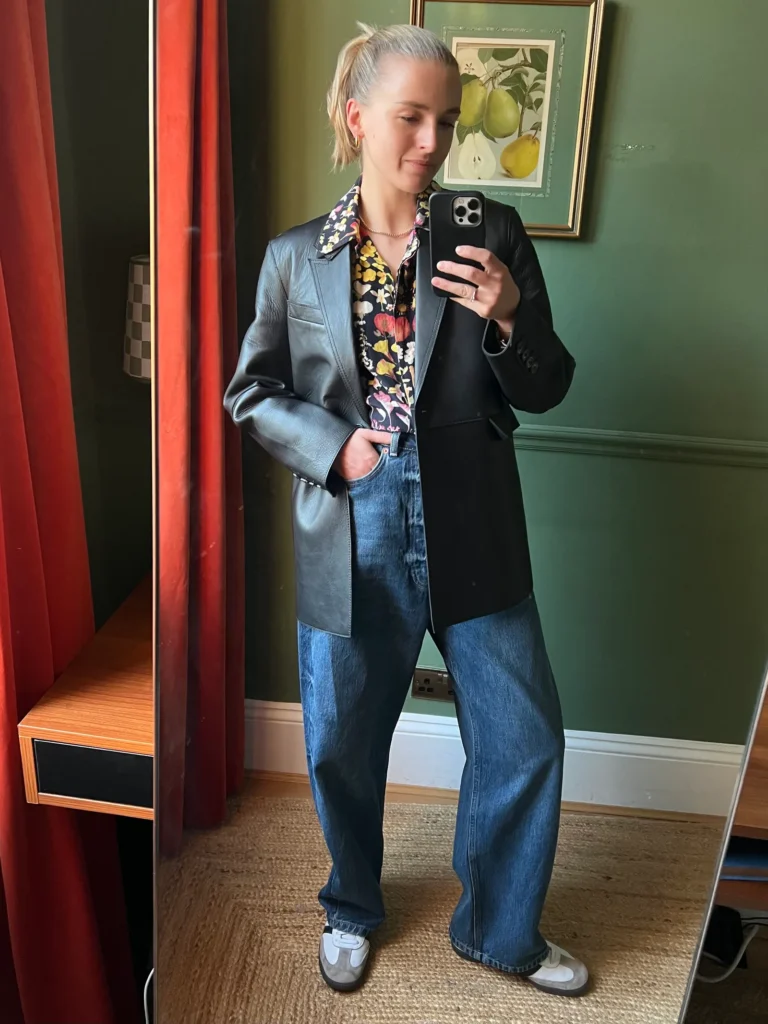I requested that ChatGPT design my outfits I am having a verbal sparring bout with a non-sentient being at 9 p.m. on a Sunday. You see, I’ve made the decision to delegate my weekly wardrobe selections to ChatGPT, and in spite of my best attempts, it keeps insisting on outfitting me primarily in fitted blazers and high-waisted pants. “Please make it more fashion forward,” I respond a third time, my aggression barely restrained. “Of course!” it chirps. “This elegant winter ensemble blends coziness and flair.” An eight-point menu is presented below, featuring items like knee-high suede boots, “oversized plaid scarf,” and “chic and edgy” leather leggings. I begin to question whether ChatGPT is, in reality, Gok Wan in 2006, captured digitally.
When I was spending a weekend away with friends in November 2022, I was first introduced to ChatGPT. During that trip, I saw a new AI tool that could, in a matter of seconds, generate in-depth answers to a wide range of questions, from the philosophical to the poetic. I dutifully gave ChatGPT instructions on how to style wide-leg jeans, and in just ten seconds, it produced a compelling 500-word article that would have taken me hours to write. I excused myself quietly and went downstairs to the bathroom to have an existential crisis.
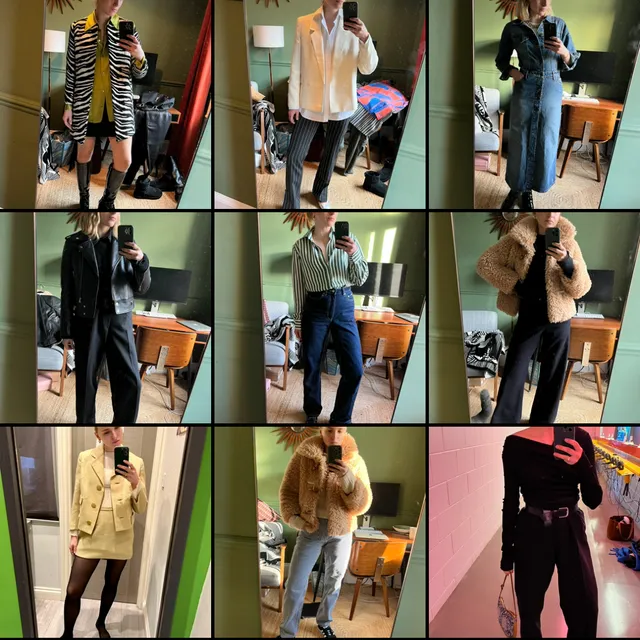
I guess I wasn’t by myself. Many creatives now view ChatGPT as a threat that should be taken seriously. Will human creativity eventually be replaced by this technology? Will it still be my job in five years? When does ChatGPT return to RuPaul’s Drag Race as a guest judge? AI has already been at the center of some high-profile creative disputes, such as the SAG-AFTRA strikes from the previous year and Sarah Silverman’s decision to file a copyright infringement lawsuit against OpenAI, the parent company of ChatGPT. However, as artificial intelligence (AI) permeates more aspects of our daily lives, it’s become more difficult to distinguish between human and machine input.
Writer and culture critic Charlie Squire says, “My concern with AI in the fashion world – and the broader creative world – is that it isn’t collaborative or spontaneous.” “A computer program can create something intriguing, something ‘fresh,’ but it lacks the contextualizing dialogue that art possesses. And without that background, I believe we would feel more and more disconnected from ourselves and our clothes.
Similar worries are voiced by chartered fashion psychologist Dr. Dion Terrelonge, who states that “we need the safety and space to take risks in order to develop personal style.” When we are continuously shown what an algorithm thinks we should like, how can we explore our own tastes? Our chances to exercise our creativity are diminished when we rely on technology to make creative decisions for us.
billion views to date I requested that ChatGPT design my outfits
Nevertheless, “ChatGPT fashion” has become popular on TikTok, with more than four billion views to date. Whether they want to put together their next party dress or replicate the style of their favorite It-girl, creators are using the site to receive fashion guidance. Some may see this as the end of personal style, but you could counter that the amalgamation of human experience that serves as the foundation for individual taste and an internet tool educated on enormous amounts of data aren’t all that dissimilar. As Squire so eloquently states: “A lot of computers can produce good art.” Additionally, a lot of people have poor taste.
In an attempt to put ChatGPT to the test, I gave it a week’s worth of outfit planning questions that roughly correspond to the kinds of knowledge and abilities a fashion expert may need. I responded to my first prompt while attempting to block out Gabrielle Chanel’s thoughts on this bleak outlook on the future of fashion. This is what took place.
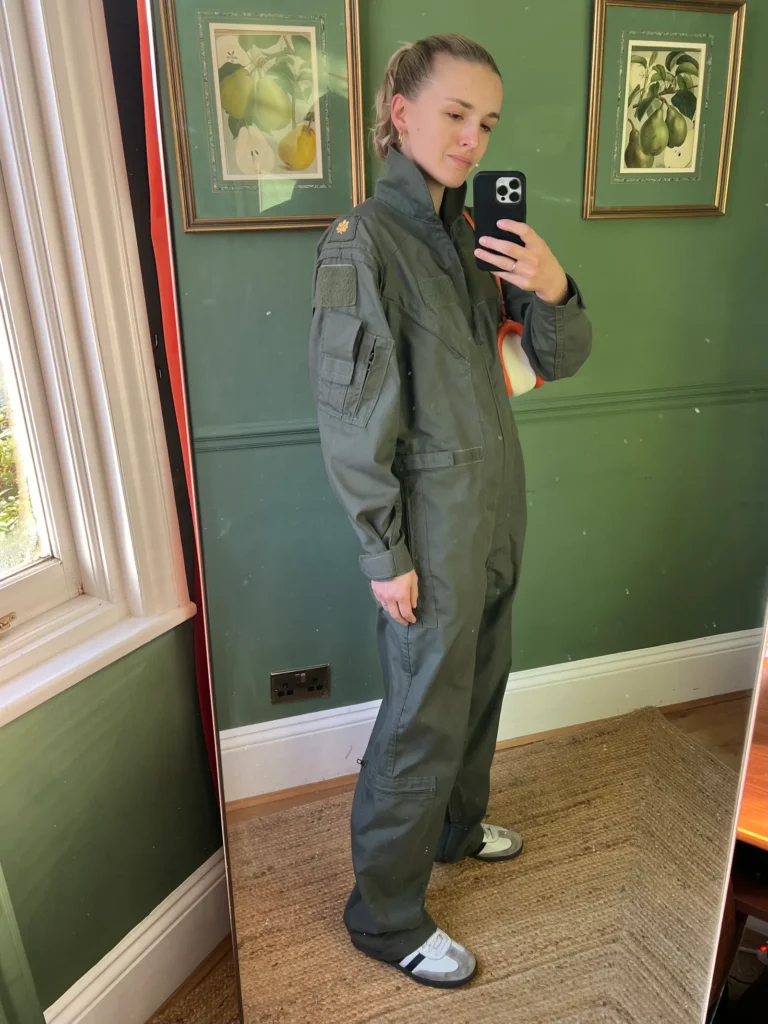
I made the decision to start simple and requested ChatGPT to design a 2024 “on trend” attire. I was about to learn that ChatGPT responds to questions with the kind of glazed excitement you might anticipate from the host of a cable shopping channel. “Bold! Sleek! It shouted, “Futuristic! Geometric!” at me.
If I were being kind, I would award ChatGPT points for the jumpsuit (a Saint Laurent jumpsuit is one of my favorite items from the spring/summer 2024 runways). Additionally, “futuristic trainers” might be a reference to the metallic sneakers that are currently all the rage in the business. Regretfully, the phrase “statement geometric accessories” turned me off; all I could think of was Kate McKinnon in the role of Weird Barbie. I modified the ensemble by adding a retro boilersuit, Adidas Gazelles, and a somewhat geometric JW Anderson Bumper bag. I rate this appearance at a seven.
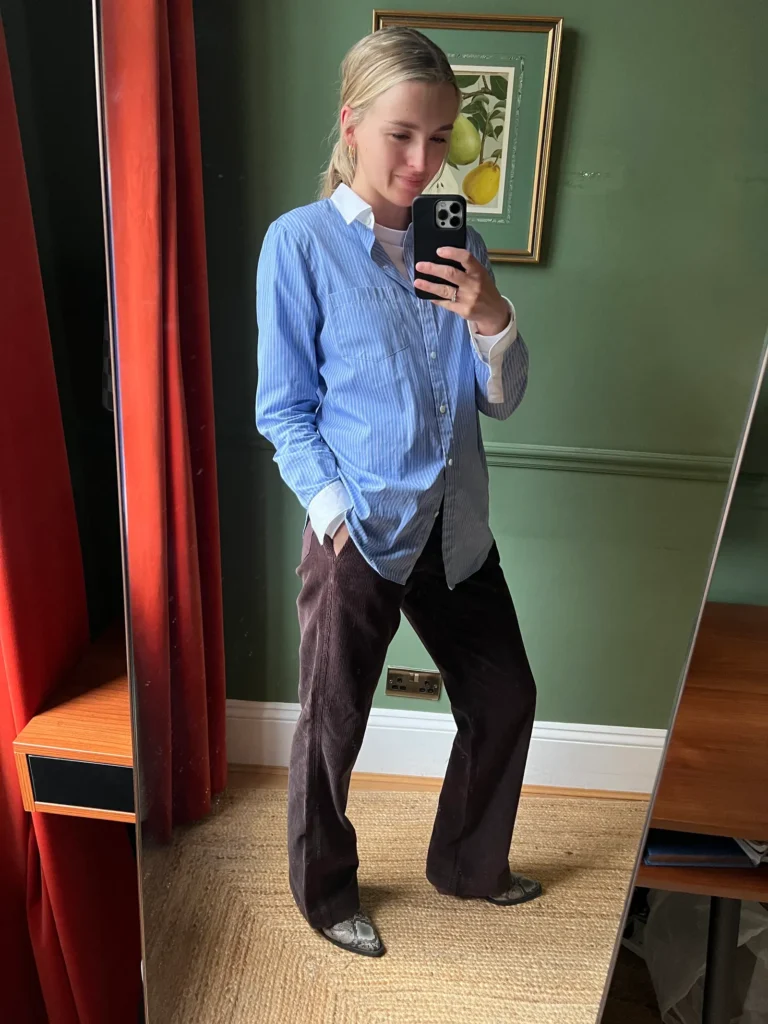
Second test: can I get styling advice via ChatGPT for a specific item? Enter stage right: a recent purchase I made on Depop of a pair of vintage corduroy pants. I was pleasantly surprised by its selection of a “fitted knitted sweater or a button-down shirt.” I had half expected it to advise me to wear a tweed blazer and a monocle (rewind to Sunday night, when a prompt about “Grandpacore” yielded: “Add suspenders and a vintage watch for a touch of timeless charm”). Yes, JW Anderson, exactly.
Naturally, the “stylish” sneaker and the Noughties ankle boot make an appearance in the answer, along with the fitted blazer. But by heeding ChatGPT’s advise with a grain of salt, I was able to put together an outfit that I really liked. 80% of the time.
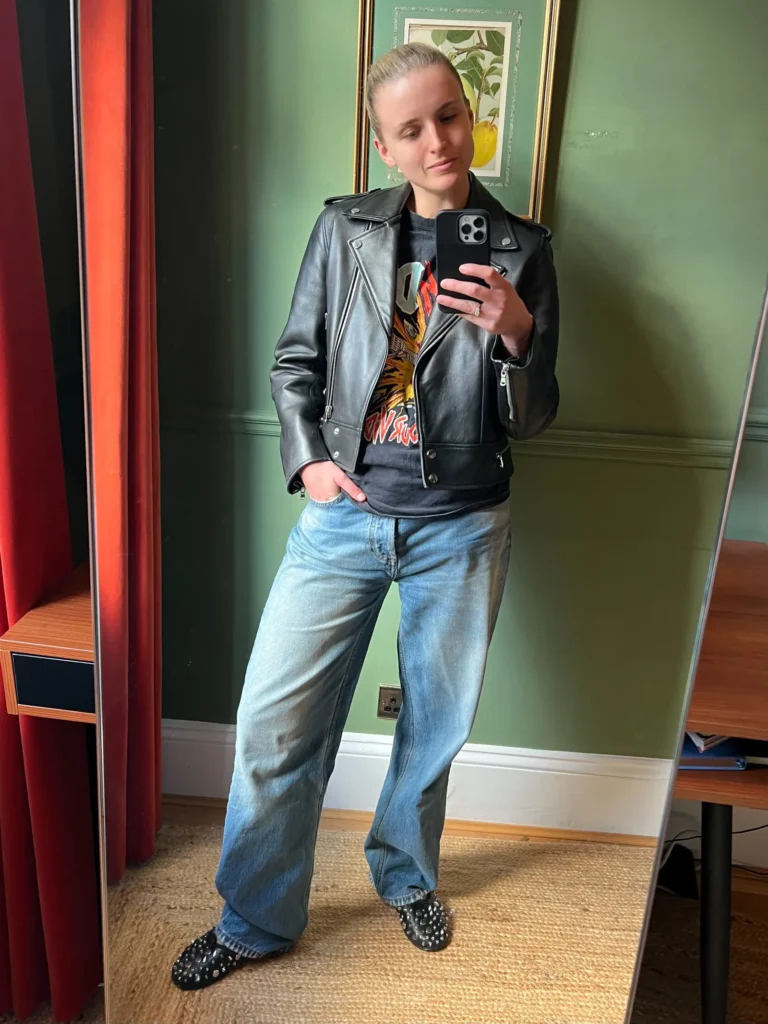
The definitions of “original” and “unoriginal,” as well as “good taste” and “bad taste,” are always changing. Therefore, it might have been reductive of me to ask ChatGPT such a personal question, but I was curious to see what came up. Could something new be produced by a program based on the “lowest common denominator” theory of culture?
Bravo to ChatGPT for suggesting a “vintage graphic tee”; adding uniqueness to an ensemble can be achieved by including gently worn items. Naturally, though, it soon reverted to shopping channel fare with “distressed denim jeans” and a “unique leather jacket”; the “bold, unconventional jewellery” reminded me of those kits for producing jewelry from the 1990s. I was eventually turned off by the response’s general style. Four times as many as ten.
When it comes to inspiration, the world of fashion is one giant merry-go-round, therefore knowing what to look for in archival references is an essential skill for any fashion creative. I chose to put ChatGPT’s fashion acumen to the test for Thursday’s ensemble by dressing like one of my favorite effortlessly androgynous French singer-songwriters from the ’70s: Françoise Hardy. The answer? All of the gang is present: “ankle boots,” “minimal accessories,” “a tailored blazer,” and high-waisted pants. It did, however, include a “sleek loafers” and a “fitted turtleneck sweater” (bien sur), which, I’ll admit, give the ensemble a touch of French charm. Not too awful. 80% of the time.
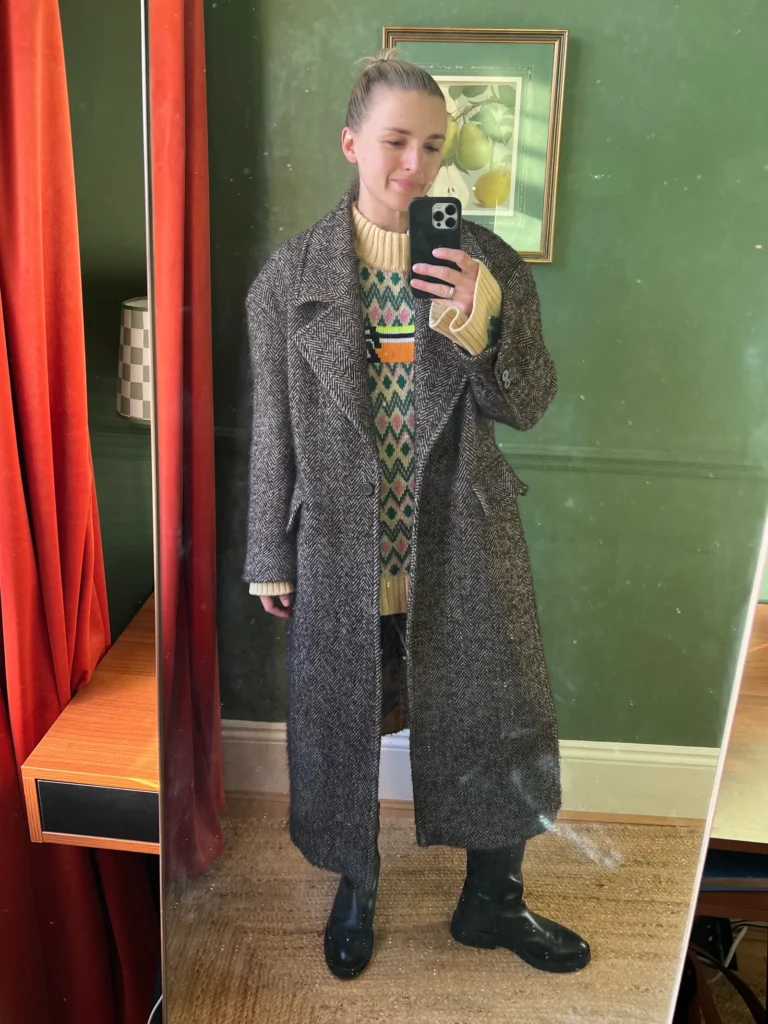
My patience was beginning to wear thin as I typed out my sixth request of the week. Please don’t screw this one up, ChatGPT; it’s chilly outside. Then, a January wonder: an ensemble composed of a whole new collection of pieces. A sweater that’s too big! Wear leggings! Boots up to the knees! A coat made of wool! I was starving as there was an abundance of fashion here. I took out my huge vintage Prada jumper and wore it with black knee-high boots, tights, and a Gant wool coat that coiled around me. I wore a cobalt-blue scarf instead of the advised “stylish hat” (so close, ChatGPT), which I tossed on right before leaving the house. 99% of the time.

Initially, I requested that ChatGPT design an ensemble influenced by Joy Montgomery; however, the recommendation that came back was for a “bright yellow knee-length dress with floral patterns, paired with a matching sun hat”. Please, God. When I substituted “Vogue editor” for my original prompt, the outcome was… impressive. Now that we were in full caricature mode, everything was pencil skirts, high heels, huge sunglasses, and withering expressions. I had the impression of a young child attempting to dress like “mommy going to work” as she shuffled around in enormous heels, carried a ladylike handbag, and had necklaces hanging down to the floor. With a white tank top and ’70s eyeglasses, I attempted to channel Saint Laurent, but my coworkers in the workplace, most of whom were wearing Wales Bonner tracksuits,were taken aback by this abrupt turn toward corporate elegance. 5% of the total.
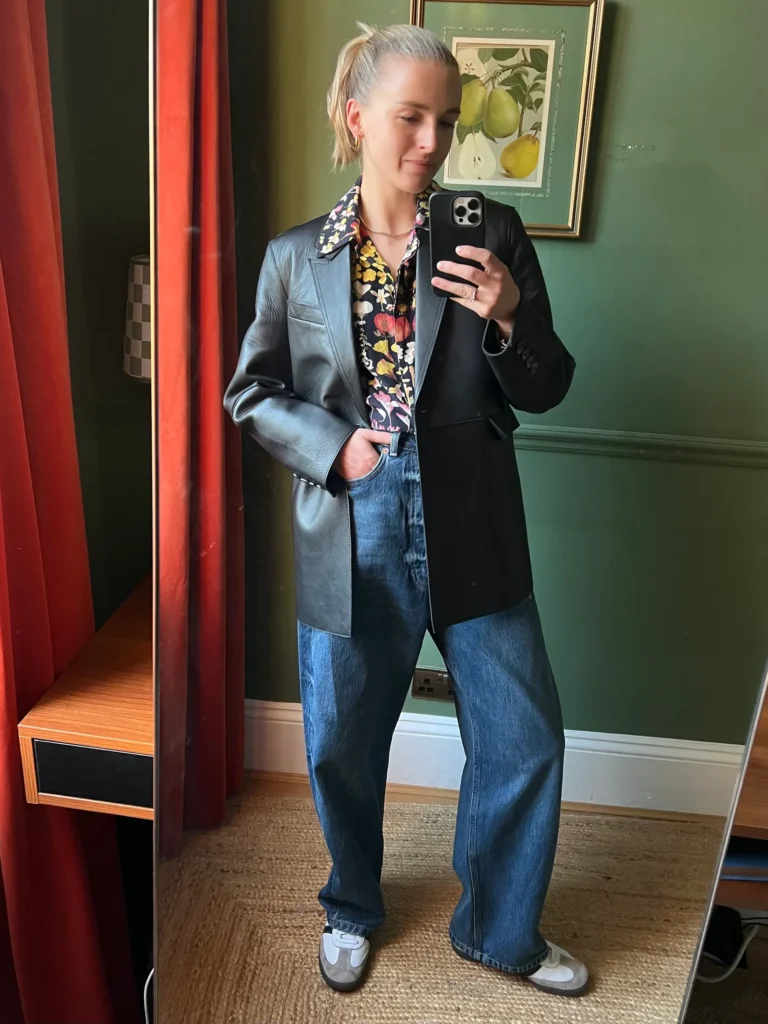
On my final day in the ChatGPT styling suite, I was prepared to go against the grain in an attempt to create something that deviated from the Pinterest algorithm. I started by using an internet random person generator, which came up with Abraham, Justin Timberlake, and Bob Hope. Alright, a bit too erratic. Thus, I selected three different people: Hailey Bieber, Dot Cotton from Eastenders, and David Beckham from the 1990s.
ChatGPT said, “Picture this,” with a tremendous impact. “Combine classic floral patterns from Dot Cotton in a silk blouse, add a sleek leather jacket reminiscent of David Beckham from the 2000s, and finish with Hailey Bieber’s contemporary take on distressed denim and ankle boots.” We’d struck gold. It was a playful mash-up of allusions that, surprisingly, didn’t make me despise the costume. I was motivated to wear a vintage floral shirt I hadn’t worn in a long time, and it went really well with my “Noughties David Beckham” leather jacket. Naturally, distressed jeans and ankle boots made a reappearance, but which fashion journalist hasn’t done the same while penning their fifth piece of the week on Hailey Bieber’s look? Nineteen of the ten
Although ChatGPT can’t completely replace real-world creativity, it can function as a sophisticated digital moodboard with the correct cues and allusions. It’s the wardrobe assistant, not the creative director; it’s the sewing machine, not the seamstress. How does ChatGPT feel about its ability to style? “Within the limitations of its training data, ChatGPT can imitate certain aspects of human creativity, but it lacks the depth of creative thinking inherent in human cognition and cannot fully comprehend concepts.” For the time being, I believe my job is secure.

